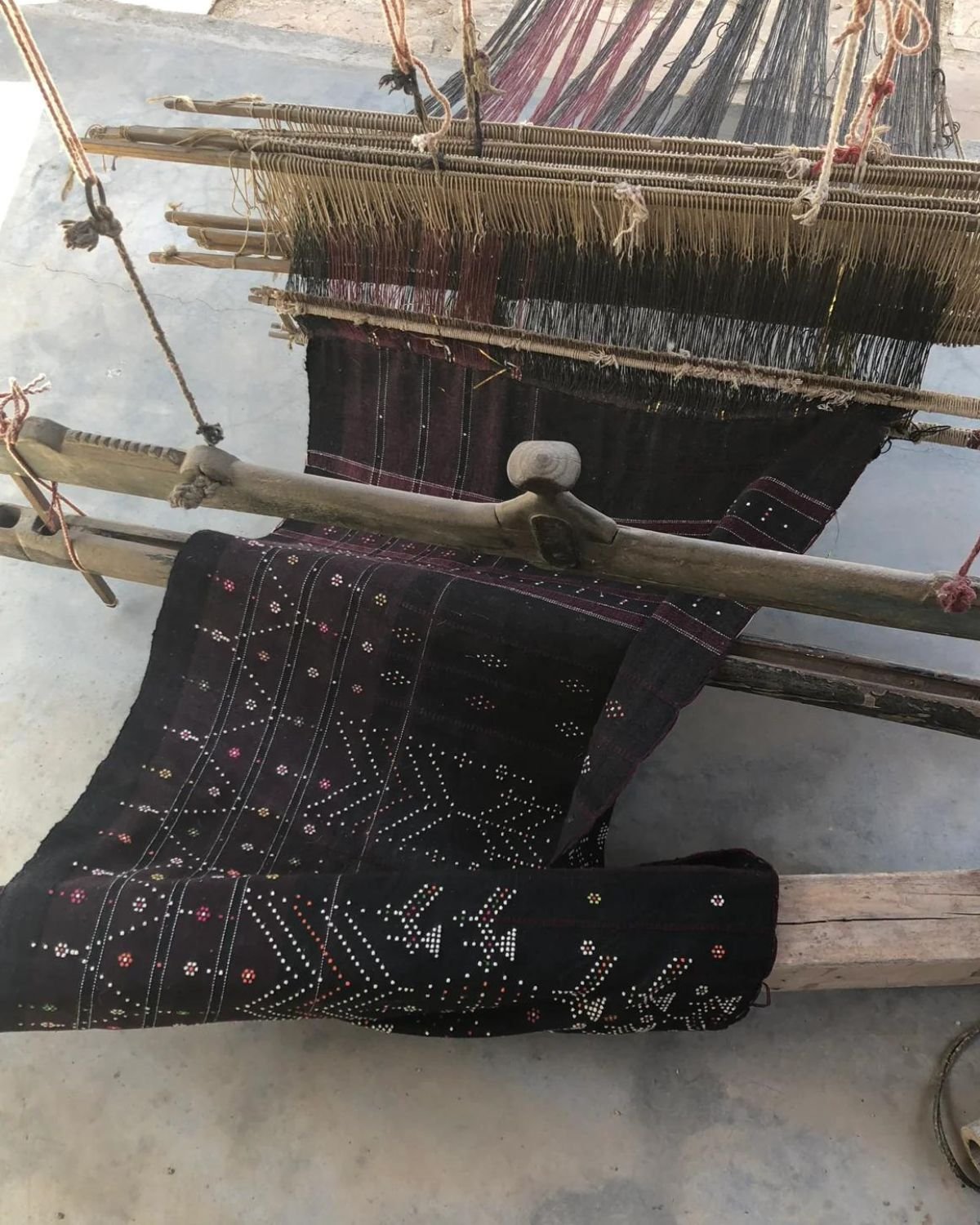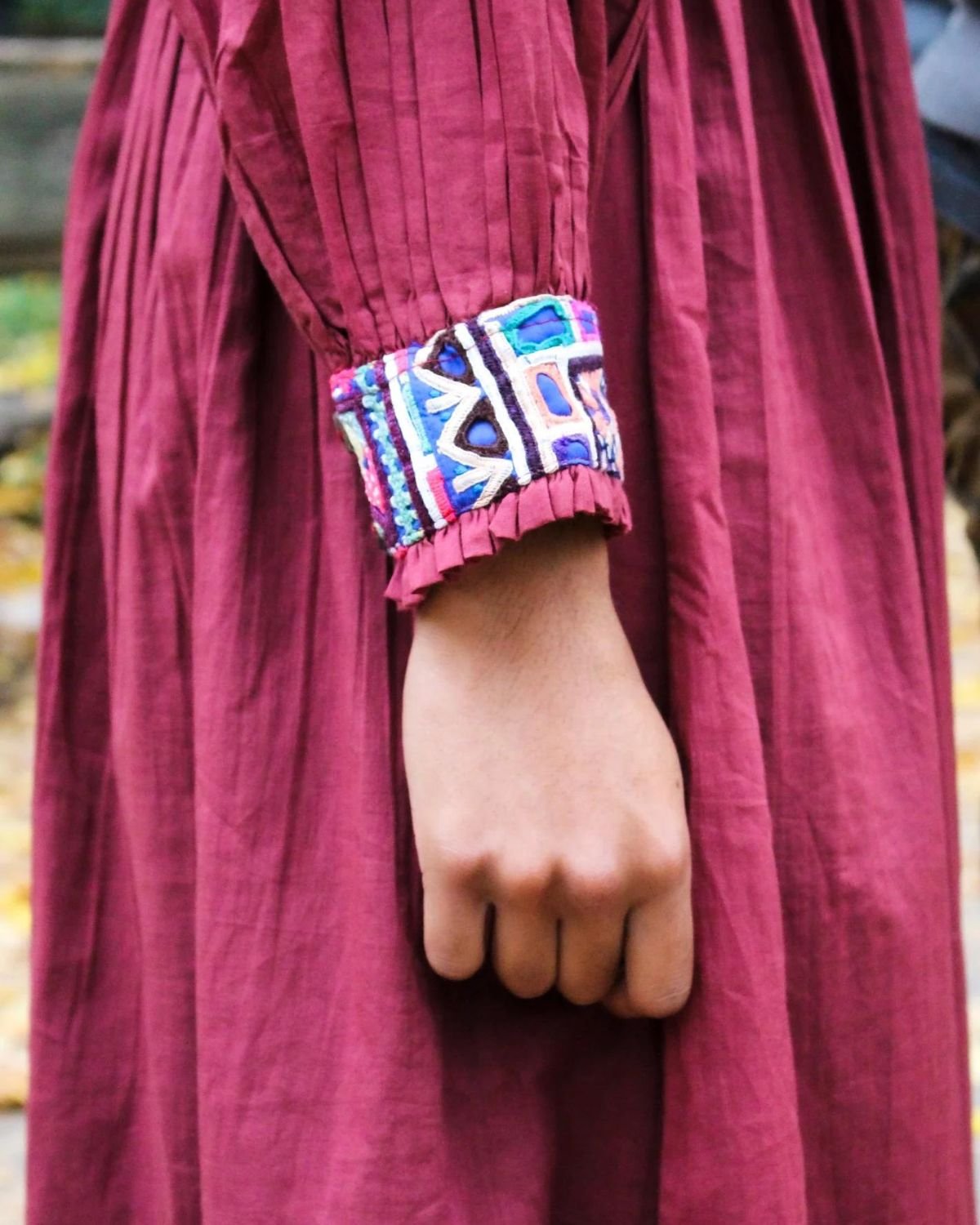How Craftsmanship Is Helping This Slow Fashion Label Do Away With Disposability
By Jharna Pariani
More often than not, sustainability can fall into a potential elitist trap that “better”, and less impactful clothing depends on next-gen materials and technological innovation. When in fact, time-honored techniques and traditional crafts are living proof that the past has already shown us a more sustainable approach.
Craftsmanship has a demonstrated history of using heritage techniques to create high-quality pieces with painstaking attention to detail, only to have them last a long time. It is a process that’s consistent with what sustainability and conscious consumerism stand for.
And a fact that Simony Patel was no stranger to growing up in India, where she saw her mother create custom clothes for her family and noticed just how strongly sustainable values were naturally stitched into the fabric of Indian culture.
“We tend to take care of our resources, we wear clothes for years until they tear apart, and even then we’ll mend it and re-wear it,” Patel explains. These values went on to inspire her to set up her own slow fashion label, Banai, which means “to weave” in Urdu.
Note: this post was made in partnership with Banai.
The art of craft
Banai was born out of the desire to bring craftsmanship back to the forefront and highlight the slower, well-made, and artisanal side of fashion. Their clothing is a complete reflection of those values. Don’t just take our word for it though — aptly titled “The Outsider Collection”, Banai's handcrafted styles pay homage to women who are “outsiders”, immigrants, refugees, or simply nomadic in spirit.
Most of their clothing features distinctive patches of Kutchi Bharat hand embroidery that’s characterized by its use of vibrant colors, intricate patterns, and detailed thread work.
These patches come from overstock embroidered pieces that have been immortalized in Banai’s clothing. Each one more unique than the other, ensuring no two people are wearing the same patch of embroidery even if they pick the same style of clothing.
Native to the region of Gujarat and her cultural heritage, Kutchi Bharat embroidery holds sentimental value to the brand’s founder. “I have worn Kutch embroidered pieces growing up. My mom was skilled in its technique, and I’ve tried my hand at learning it too, so I am fully aware of the amount of time, hard work, and patience that goes into making these pieces,” Patel said. “Which made it even harder for me to see these overstock embroidery pieces go to waste.”
The brand also uses Rabari Bharat embroidered patches, handwoven textiles, and treats its fabrics with natural dyes. In fact, its intricate processes like natural dyeing make Banai's pieces a far cry from anything mass-produced or mechanized. All of the styles that are yellow, for example, don’t share an identical consistency of color, but manage to hold their own despite these slight shade variances.
Having witnessed the process of natural dyeing with her artisan partners in India, Patel affirms that the technique “is as much science as it is a form of art."
“You have to have the right pH value to attain a specific shade, the water has to be the right temperature, too much shade or too much sunlight could potentially ruin the color. Even the dye pot has to be the right metal or you could have the wrong effect on fibers,” Patel explains.
The final result of this intentional process can be seen in the Jaana Jacket, which was naturally dyed using marigold, madder root, indigo, and flowers.
Embracing slow fashion through artisanship
The desire to put a spotlight on the — all-too-often invisible — makers behind clothes and reviving age-old crafts can be a powerful force in uplifting artisan communities financially, while also providing provenance to clothing.
Proving that slow fashion isn’t just a descriptor of speed, craftsmanship can help heighten the awareness of the design process and its impact on workers and communities. It challenges fast fashion’s fixation with mass-manufactured, globalized styles and becomes a custodian of diversity.
Compared to fast fashion, craftsmanship can enforce a sense of restraint in consumption. After all, you can only consume as fast or as much as an artisan can produce.
With just six key styles at present, Banai produces its pieces in small-batch production runs and aims to grow mindfully in the future without compromising on its core values.
“I don’t want to grow to the extent where we’re not considering how we’re making our clothes. I’d like to maintain the slowness in our clothes and ensure that the craft is being highlighted every single time,” Patel explains.
The brand partners with artisan communities in India, one of which is Saheli, a woman-owned social enterprise that trains and employs rural women, while providing them with fair wages, flexible hours, and a safe work environment.
The slow path forward
The environmental and social impact of clothing is often determined during the design stages and yet conventional wisdom would have us believe that substituting materials alone can alleviate the impact.
However, craft has proven that hands-on quality and honed techniques as well as the ability to control production conditions and material provenance support many sustainable values.
Craft can, in fact, be the agent of change in a material and social sense.
In the same vein, Simony hopes to highlight a different craft with every collection that Banai releases in the future. These don't necessarily have to be crafts from India, as long as it’s a slow fashion craft that manifests itself in seasonless pieces.
“Craftsmanship is inherently a huge piece of the slow fashion puzzle because things are things made by hand. I like the fact that it refuses to compete with how quickly fast fashion churns out styles. Everything takes time, embroidery is a lengthy process, even natural dyeing has a drawn-out process to it,” Patel said.
Circularity is another goal Banai is highly focused on. Whether it’s through zero-waste design practices or upcycling, they are constantly collecting fabric scraps from their manufacturers for other useful items like these delightful upcycled pouches.
While they do hope every customer will cherish and hold on to their pieces in perpetuity or at least pass them on to their loved ones, the brand does encourage its customers to return their worn-out Banai pieces in exchange for credit towards future purchases.
In an effort to keep their materials in use, they plan on repairing and upcycling the worn-out pieces or hope to resell the gently-worn pieces through their preloved collection.
Check out Banai's handcrafted styles if you’re in the market for a unique piece that’ll help you stand out while supporting a heritage craft.
About the Author:
Jharna Pariani is a fashion writer and creative strategist whose work is rooted in honesty and deep observation of the world around her. When she isn’t busy penning down her thoughts, she moonlights as a video editor creating fashion and food reels on Instagram for several brands and influencers.











